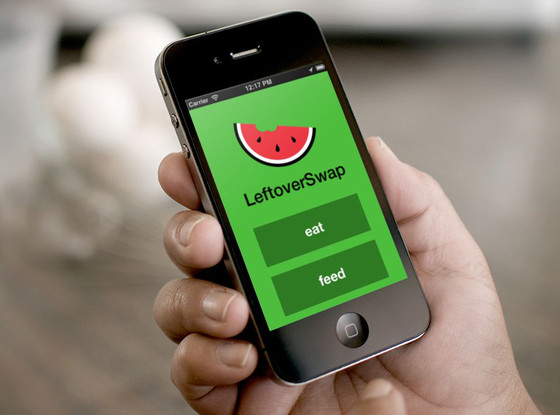We have all used, or at least heard of, apps such us Uber, Blablacar or Couchsurfing and AirBnB. The first two deal with car-sharing and the last two with apartment-sharing. They have become widely used in many countries and are successfully taking over their respective markets. Could you imagine a similar situation but with regard to food-sharing? Well now you can, enter the Leftover Swap app!
Did you know, that roughly one third of the food produced in the world every year gets wasted – that is approximately 1,3 billion tonnes of food! Actually, according to statistics, it would be possible to feed around 870 million hungry people in the world if only one-fourth of this wasted food could be saved. But still, in developed countries such as the US, there is more food produced that could ever be consumed by its citizens. People buy much more than they need, which in consequence increases the food wastage every year.
The idea behind the new app that is being developed in the US – Leftover Swap, is to allow people to share the surplus of their food with people who are willing to accept it. In other words, suppose you have made too much pasta and you will not be able to eat all of it before it gets bad; now you can register within the app as a micro volunteer, post a picture of that meal with a description and then wait for someone who might be interested in picking it up! Easy as that.
Due to legal regulations, which are still being studied by the creators of the app, the only way you can share your food is as a donation, you cannot sell it. Therefore the reasons behind its development are purely environmental and will not bring any profit to the creators – they claim that helping challenge the issue of food waste as well as enabling people to interact within their community is enough for them.
Some people might doubt the positive reception of such an app, since it might be hard to trust a stranger with food they are sharing, but Newman, one of the creators of the app, quickly comes with a response to that: “People seem to have a huge lack of trust in their fellow man, thinking that leftovers would be diseased somehow. It goes back to the couch-surfing thing. You’re staying at a random person’s place and you have to trust they aren’t going to do something weird. It’s the same with leftovers.”
This all leads to a conclusion about the increasingly popular notion of sharing economy, supported by many apps on our smartphones, which basically explains how important it is for people to be able to save up money with easy peer-to-peer exchange of goods and services as well as opinions and experiences – and to be a part of a community.
What do you make of the whole notion of sharing economy? Do you think Leftover Swap will be as successful as for example Couchsurfing?
References:
http://helpfromhome.org/leftover-swap-passing-on-leftover-food
http://www.fao.org/save-food/resources/keyfindings/en/


